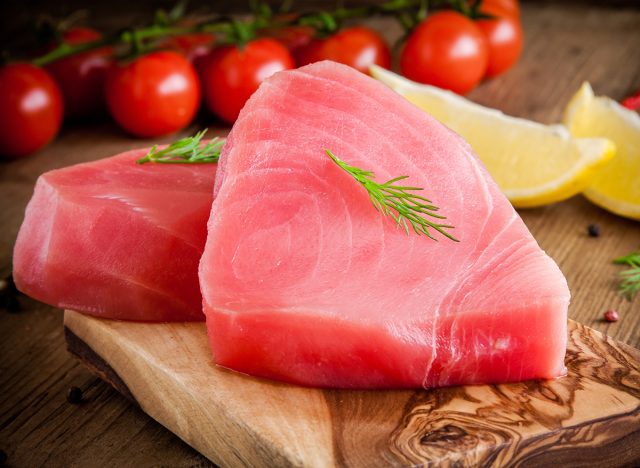Dream Body in 30 Days! Plyometric & Paleo Plan With This Proven Workout and Meal Plan

Want to achieve your dream body? My go-to suggestion for quickly reducing body fat, increasing muscularity and improving your overall feeling of wellness is a hybrid of Plyometric Training and a Paleolithic Diet. I know if which I speak: My experience in fitness spans over two decades, including a dedication of over a decade to CrossFit, five years deeply involved in HYROX, and participation in various obstacle races like Spartan and Nuclear, along with powerlifting, Olympic Lifting, and kickboxing. With extensive experience as a trainer, for the past five years, I have been providing elite fitness training strategies to specialist police units. And here's the plan that works for them and will work for you.
The Basics of Plyometric Training

These are movements where you perform maximum effort over a quick duration. The exercises look simple but quickly exhaust you. Plyo exercises include: Jumping squats, jumping lunges, get-ups and explosive/clapping press-ups. The movements require rapid stretching and contracting of your muscles and as a result improve speed, strength and agility.
Plyo movements are great for improving your athletic ability, increasing coordination and improving your heart health. They predominantly target your fast twitch fibers for a boost in explosive strength.
Related: I've Tried Nearly Every Diet and This is the #1 Best for Weight Loss For Me
The Basics of a Paleo Diet

The main principle of a Paleo Diet is that it copies the way our ancient ancestors used to eat, focusing on whole, unprocessed foods. The main foods you eat are lean meats, fish, fruit (In small amounts due to the fructose), vegetables, nuts, and seeds. The foods you avoid are grains, dairy, and processed foods. Paleo is high in protein, which makes you feel full after eating and don't suffer cravings for sugary food, caused by eating high-GI foods. The diet has many benefits including weight loss, improved blood pressure, improved cholesterol levels, and reduced inflammation. By cutting out processed foods, you'll not only look better, you'll feel much better and won't suffer the highs and lows in energy spikes caused by sugary/processed food.
The 4-Week Plyo/Paleo Guide

Week 1
Plyometric Training
Start by introducing basic plyometric exercises into your routine. Exercises like squat jumps and box jumps three times a week. Start with two sets of 10 reps each and gradually increase as your body adapts. Always ensure you are fully warmed up before attempting Plyo movements.
Paleo Diet
Eat foods that are Paleo-compliant and those that are not, then start by swapping out all the processed foods in your home for whole foods including lean meats like chicken or fish. Add nuts and green leafy vegetables to your stable meals. Here's a sample list of Paleo foods:
Meats
- Beef
- Pork
- Lamb
- Chicken
- Turkey
- Duck
- Veal
Fish and Seafood:
- Salmon
- Trout
- Mackerel
- Sardines
- Shellfish (shrimp, crab, lobster)
- Tuna
- Cod
- Haddock
Eggs:
- Chicken
- Duck
- Quail
Vegetables:
- Broccoli
- Spinach
- Kale
- Brussels sprouts
- Peppers
- Onions
- Carrots
- Zucchini
- Asparagus
- Cauliflower
Fruits:
- Apples
- Oranges
- Bananas
- Berries (strawberries, blueberries, raspberries)
- Melons
- Peaches
- Pears
- Plums
- Pineapple
- Grapes
Nuts and Seeds:
- Almonds
- Walnuts
- Macadamia nuts
- Sunflower seeds
- Pumpkin seeds
- Chia seeds
- Flaxseeds
Healthy Fats and Oils:
- Olive oil
- Coconut oil
- Avocado oil
- Ghee (clarified butter)
Tubers:
- Sweet potatoes
- Yams
- Beets
- Turnips
Others:
- Avocado
- Coconut (milk, cream, flour)
- Olives
- Herbal teas
- Honey and maple syrup (in moderation)
- Dark chocolate (70% or higher, in moderation)
Herbs and Spices:
- Basil
- Oregano
- Thyme
- Rosemary
- Cinnamon
- Turmeric
- Garlic
- Ginger
Week 2
Plyometric Training
Increase the reps of the Plyo exercises you are doing and try some of the harder movements such as tuck jumps and clapping press-ups. Aim to stick to three sessions per week.
Paleo Diet
Ensure you've removed all the processed, grains and dairy food. Look up Paleo recipes for ideas of meals and snacks.
Week 3
Plyometric Training
Start to mix multiple Plyo exercises into single sessions. Focus on your form and and safe landing to avoid injuries.
Paleo Diet
Plan your meals. Check you have the right macro amounts for your training goals. Establish which Paleo meals you like the most and create a routine of cooking the paleo meals you like.
Week 4
Plyometric Training
Continue to increase the rep range of each movement, focus on mastering 2-3 Plyo exercises per session. And continue eating Paleo.
Related: I Lost 20 Pounds With These 5 Hacks
Benefits of Combining Plyometric Training with the Paleo Diet

Enhanced Weight Loss
Both plyometrics and the Paleo diet are effective for burning calories and reducing body fat.
Increased Muscle Strength and Tone
Plyometrics improve muscle strength, while the high protein content in the Paleo diet supports your muscle repair and growth.
Improved Cardio Health
Plyo exercises boost heart rate and improve heart health, aided by the Paleo diet's reduction in processed foods.
💪🔥Body Booster: By cutting out processed foods, you'll not only look better, you'll feel much better and won't suffer the highs and lows in energy spikes.
Jim Richard is a Certified Personal Trainer, Fitness Blogger and online Wellness Coach at jimmyjrichard.com




